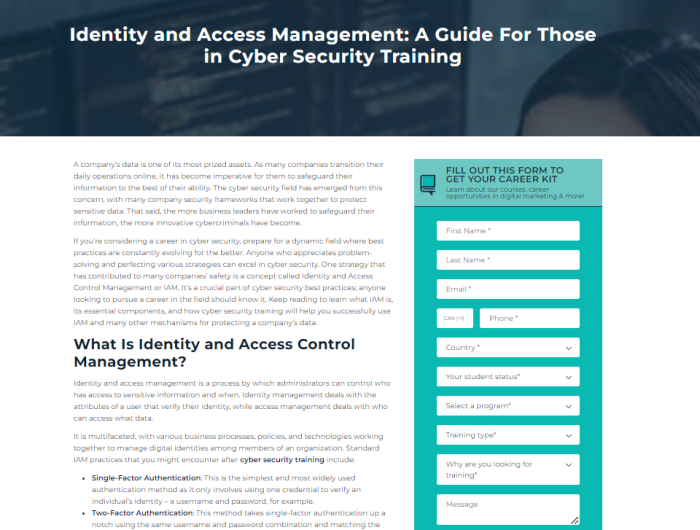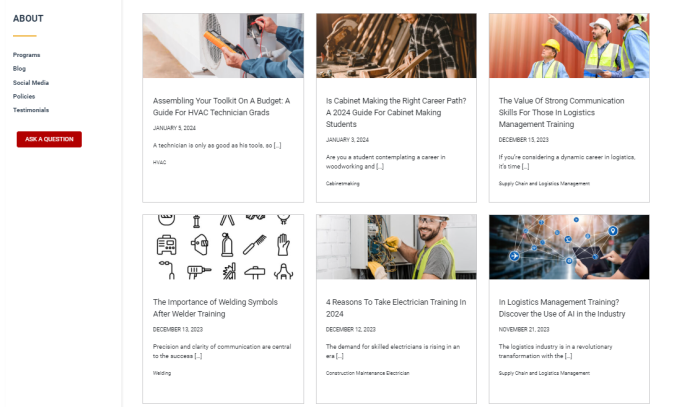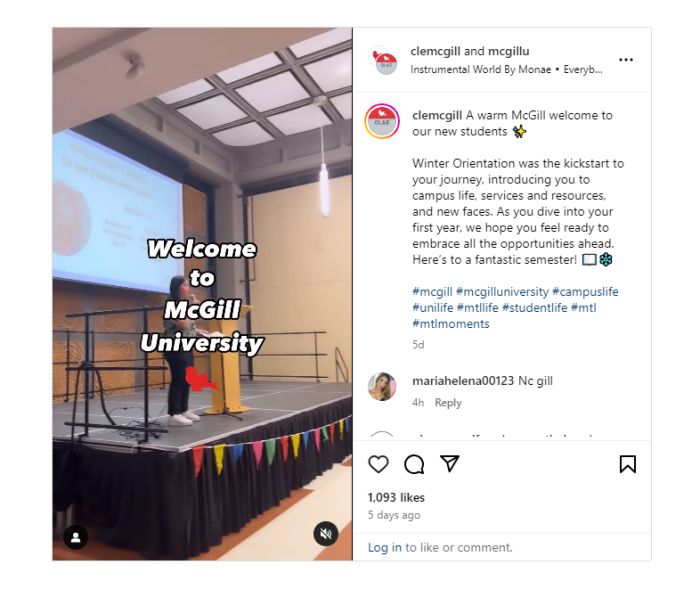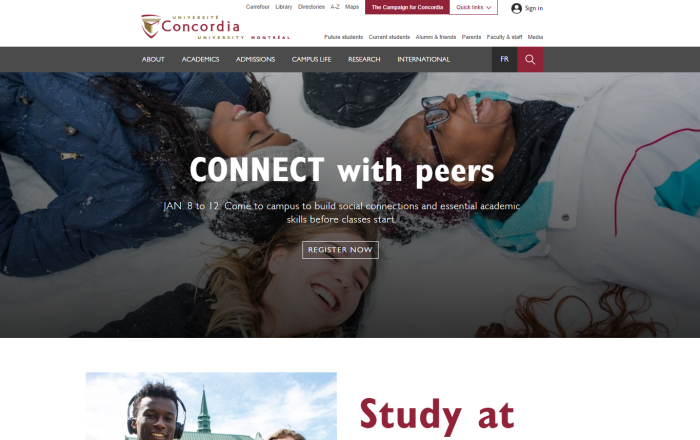Need more high quality student leads?
If so, you’re in good company because this is probably the most common requirement we hear about when speaking with higher ed marketers. Every school is a bit different in its approach to online lead generation but there are, of course, very common elements and recommendations that apply to just about everyone.
Its best to start with a common understanding of key concepts. For starters, you may ask: What is lead generation in education? Lead generation in education is the process of attracting prospective students and nurturing their interest so that they convert and complete their enrollment at your school. You may also ask yourself, what does student conversion mean? Here, conversion refers to the process prospective students go through to become enrolled. This includes visiting your school website and learning about your programs, starting and submitting an application, and processing their payment for full enrollment.
The number of student leads your online marketing produces is a function of two things: 1) the number of visitors from your target audience that your site attracts and 2) your ability to convert members of that audience into leads. Items 1 -7 of this checklist suggest ways to increase your visitor traffic. Items 8-13 suggest ways to increase your conversion rates on that traffic.
So here is our list of the most common recommendations we offer to schools looking to answer the question of how to generate student leads and increase that number through their online marketing efforts.
1. Become proficient with Google Analytics
To generate more qualified traffic on your website you must first understand the traffic you’re getting now. Google Analytics 4 (GA4)will help you do that. Get it installed and properly configured to begin reviewing and understanding your performance. GA4 is the computer that monitors your student lead generation engine and tells you what’s working and what is not. Over time, or with the experience of education marketing professionals, you’ll begin to understand the traffic and behavior patterns of visitors on your site. You can then translate your business goals into key performance indicators and goals within analytics.
2. Invest in Your On-Page SEO
You must invest in on-page search engine optimization to maximize the impact of your school website. On-page SEO is the process of optimizing the content of your pages so that the search engines find it and rank you highly for the keywords that your audience is using to search for on the web. It may be the one thing that can most improve your student enrollment lead generation production. On-page optimization involves keyword research, making sure your content includes target high-gain keywords, defining you page meta data, setting good page titles, setting proper H1 tags, etc. Don’t skimp on this work. It is critical for generating quality student leads.
Example: Cumberland College creates blog posts that factor on-page SEO best practices. This includes optimizing each article with a focus keyword that is featured in the article title as well as throughout the text:

Source: Cumberland College
3. Expand Your School’s Efforts in Off-Page SEO
Off-page optimization is primarily the activity of building respectable external links and backlinks to your site. An example of this could be having the New York Times link to your site from within a story about well-run higher ed institutions. Each high quality link you get from a respectable source passes “authority” to your site. The more authority your site has the higher you rank. The higher the rank the more traffic you get. Link building is critical to high ranking but it can also be a risky if you try and take short cuts or do it badly. Make sure you do the research to understand what good links are and then begin creating them.
Example: Study International promotes the department, Berkeley Global, on its blog targeting international students. This third-party site uses its platform to link to different schools, including this department. In the article featured below, the publication contributes to the department’s link building efforts by providing hyperlinks to its website:

Source: Study International
4. Develop and Refine your Content Strategy to Generate More Student Leads
The concept of “content is king” has never been more true than it is today with respect to search rankings. To successfully generate student leads, you must have a content strategy that enables you to regularly publish high-quality, relevant, keyword-driven content that is specifically crafted for your target audience. Develop an overarching plan that incorporates producing content for various media, like video, podcasts, blogging, press releases, infographics, microblogging, newsletters, and email. Set you sights high and aim to produce viral content. You can even start writing and publishing today. And don’t forget you have two big audiences: people and search engine spiders—in that order of priority.
Example: A strong content strategy caters to your school’s student personas and provides tailored content that piques their interest. Through their blog post, the North American Trade School highlight key knowledge to attract students interested in their program offerings:

Source: North American Trade School
5. Get on Top of Social Media
If you haven’t got a well-defined social media strategy yet then you are behind your competition. Consider where you audience gathers and create accounts in those spaces—be it YouTube, Facebook, Twitter, or another platform. Start to engage with your target audience immediately and develop a content calendar that can help you consistently put out new posts. Get your social media icons on everything, and the traffic will begin to flow.
Your content strategy should also define what content gets pushed out to which of your social media channels. Track social media activity in analytics and identify which channels are producing leads. This well help you focus on developing them even more. Here, knowing the right social media goals and KPIs to track is key. Most importantly you must genuinely engage with your market—faking it simply won’t work. Once you have the main channels addressed, start experimenting with the secondary ones like, potentially, Pinterest. And keep experimenting, especially since social media is not going to go away.
Example: McGill University attracts prospects by creating content for its community on social media. Here, on its Instagram account, McGill welcomes new students and provides a snapshot of the orientation experience for prospective students watching. This can contribute to better engagement with student leads:

Source: McGill University – Instagram
6. Build a Great Mobile Website and Get into Mobile Marketing
Your student leads live on their mobile phones. You probably do, too. Your website traffic from mobile devices is probably between 10-15 % and increasing. You need a mobile strategy that includes both your content and your marketing. You can produce a separate standalone mobile site or you can redesign your complete website using responsive web design (RWD). You need to have a mobile site to get your content there and to get your advertising there too—to meet them.
Example:

Source: Digital School
7. Invest Strategically in Online Advertising
PPC (and other online) advertising can do wonders for your traffic, but remember, it is a temporary effect that evaporates when you turn off the budget. It is a tactical marketing tool that can be extremely effective if used correctly. Unfortunately, a lot of people try out PPC on their own, fail and then write it off because it did not work. For example, pushing PPC traffic to your home page for branding purposes is simply not a productive approach. PPC advertising is not easy to do well. This is a great time to consider getting expert support—at least initially, to learn the ropes on how to target it, track it, and optimize it. Banner, button and newsletter advertising are other tactics you should consider to drive traffic if you have specialized academic programs that are suited to this kind of advertising for example, online MBAs.
Interested in getting personalized support for your school’s digital marketing efforts? Reach out to our team to learn how you can develop a PPC strategy that delivers results!
8. Upgrade your Website Design
We can all appreciate the aesthetic of a well-designed web site, but what is the effect of design on student leads and registration conversion? Research indicates that students will often drop a college from their possible list if they can’t find the information they need (or want) on the website. So flattening your architecture and simplifying your navigation is a big first step. You’ll want key information to be easily accessible and reachable, with as little clicks needed as possible. Most importantly, build your next site with your audience in the driver’s seat, and give them what they want. This will contribute to a better user experience.
Example: The Concordia University website creates a pleasant user experience that provides prospects with easy access to key links, including Admissions, Academics, and International pages. Prospects can also easily navigate to the “Future Students” page to get to where they need to go:

Source: Concordia University
9. Improve your Customer Segmentation
Your audience is made up of many discrete segments. To successfully capture them as student leads your website and marketing must speak their language, address their mindset and provide information that is appropriate to their particular stage in the recruitment process. Many schools use home page segmentation strategies to do this but don’t rely on that exclusively. Develop page flow and conversion events that speak to their content requirements and psychographic characteristics for best results. You can also incorporate these efforts in list segments within your CRM, allowing you to send personalized messaging that enables prospects to feel better connected to your school.
10. Create Captivating Offers to Prospects at All Levels of Your Admissions Funnel
Your web pages must provide conversion events at critical junctures to capture leads. Interactive video, chat agents, info request forms, document downloads, newsletters, eBooks, email lists, and campus visits are all examples of conversion points you can integrate throughout your site, at appropriate points, to capture lead information. All of this falls under top-of-the-funnel (ToFu) to bottom-of-the-funnel (BoFu) marketing. It is essential to provide the right offer at the right time to the right audience, particularly when it comes to generating student leads and boosting your enrollment efforts. Doing so ensures that your school is able to engage its prospects from the primary stages to the very end—pushing them towards enrollment through the awareness, consideration, and decision stages.
11. Increase your A/B Testing Activity
Research reports that organizations with the highest conversion rates are typically the ones doing 30+ A/B tests a month. You can A/B test multiple aspects of your marketing, from A/B testing emails to A/B testing landing pages. If you want to increase you conversion rates you need to learn how to use “Experiments” within Google Analytics and make A/B testing a part of your regular marketing activities. Start simple and run an A/B test on the call to action on your most important landing page. Learn from it, optimize that page and then keep at least one test running at all times (on this or other pages) and you will reap the conversion rewards.
12. Improve your Lead Conversion Rates with CRO
Landing pages and your regular web pages all contain “conversion events.” The goal of the all pages is generally to facilitate those events. A landing page is a pretty obvious conversion. Regular pages might contain a pdf download or a link to another key page that you know is really important to facilitate registrations. Regardless of the type of pages you manage or conversions you seek, you must see each page a having a goal – or multiple goals – and you must learn and apply the principles of Conversion Rate Optimization to produce more student leads.
13. Understand Conversion Attribution for Your Leads
Do you regularly and accurately track which of your student leads sources convert at the highest rate. Do you know what interaction of a visitor across your lead sources produces the highest rate of return? Google Analytics now includes a tool that allows you to conduct this analysis and gain deeper insights into the effectiveness of your marketing through conversion attribution. If you tag your offline activities you can even integrate those sources into your analysis. Why pursue these complicated analyses? Because they will indicate what works and where to direct your marketing dollars in the future to get maximum lead conversions.
Your student lead production can be very directly affected by improving your skills with each of these tactics, not to mention the cumulative effect your can get if you apply yourself to using these practices across your marketing mix. Some are more appropriate for some schools than others but that is up to you to determine. The important thing is to examine your specific circumstances and apply the most appropriate strategies to produce the most impact.
Wondering how you can condense this information and answer the simple question of how do you get leads for school? Simply put, you can get leads for your school by checking your analytics, improving your SEO and content strategy — including social media — and enhancing your web design. Key things to also consider include customer segmentation, A/B testing, and conversion rate optimization.
Does this checklist of key practices appeal to your marketing sensibilities? Would you recommend any that do not appear on this list. Which have you found to be the most important? We look forward to getting your feedback.
*Editor’s note: This blog was originally published on 26th January 2013 but has been updated to reflect current trends







